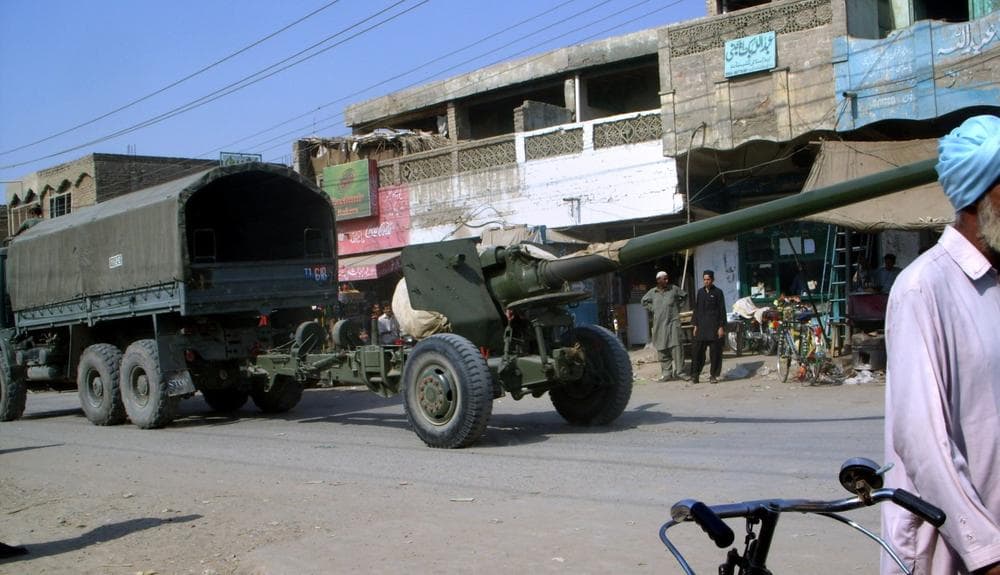Advertisement
Taliban Fight Back Against Pakistan Offensive

Militants clashed with Pakistani troops advancing into their main sanctuary near the Afghan border Sunday amid signs the army faces a far tougher fight than in other assaults against al-Qaida and the Taliban in the northwest.
The operation in South Waziristan follows repeated requests from the U.S. to take on the jihadists behind soaring terrorist attacks in the nuclear-armed nation and al-Qaida and other extremists believed to be plotting strikes in the West.
The push involves mostly poorly equipped soldiers trained to fight conventional wars, not counterinsurgency operations, who have failed in three other campaigns in the mountainous region since 2004. The region is almost wholly under Taliban control.
Reporters are blocked from visiting the region, but accounts Sunday suggested that the 30,000 troops were in for a bloodier time than in the Swat Valley, another northwestern region that the army successfully wrestled away from insurgents earlier this year.
"Militants are offering very tough resistance to any movement of troops," Ehsan Mahsud, a resident of Makeen, a town in the region, told The Associated Press in the town of Mir Ali, close to the battle zone. He and a friend arrived there early Sunday after traveling through the night.
Fighting early Sunday in the Sarwaki area left one solider and seven militants dead, said intelligence officials on condition of anonymity because they were not authorized to speak to media. Authorities said Saturday five soldiers and 11 insurgents had been killed on the first day of the campaign.
Mahsud said the army appeared to be mostly relying on air strikes and artillery against militants occupying high ground. He said the insurgents were firing heavy machine guns at helicopter gunships, forcing the air force to use higher-flying jets.
The army is up against about 10,000 local militants and about 1,500 foreign fighters, most of them from Central Asia. They control roughly 1,275 square miles (3,310 square kilometers) of territory, or about half of South Waziristan, in areas loyal to former militant chief Baitullah Mehsud, who was killed in a U.S. missile strike in August.
Advertisement
Officials have said they envisage the operation will last two months.
A resident in the town of Wana in the heart of Taliban-held territory said the insurgents had left the town and were stationed on the borders of the region, determined to block any army advance.
"All the Taliban who used to be around here have gone to take their position to protect the Mehsud boundary," Azamatullah Wazir said by phone Sunday. "The army will face difficulty to get in there."
Intelligence officials said Saturday that the ground troops were advancing on two flanks and a northern front of a central part of South Waziristan controlled by the Mehsuds. The areas being surrounded include the insurgent bases of Ladha and Makeen, the officials said on condition of anonymity because they were not allowed to brief the media.
As many as 150,000 civilians - possibly more - have left in recent months after the army made clear it was planning an assault, but as many as 350,000 could still be in the region. The United Nations has been stockpiling relief supplies in a town near the region, but authorities are not expecting a major refugee crisis like the one that occurred during the offensive this year in the Swat Valley.
Over the last three months, the Pakistani air force has been bombing targets, while the army has said it has sealed off many Taliban supply and escape routes. The military has been trying to secure the support of local tribal armies in the fight.
This program aired on October 18, 2009. The audio for this program is not available.